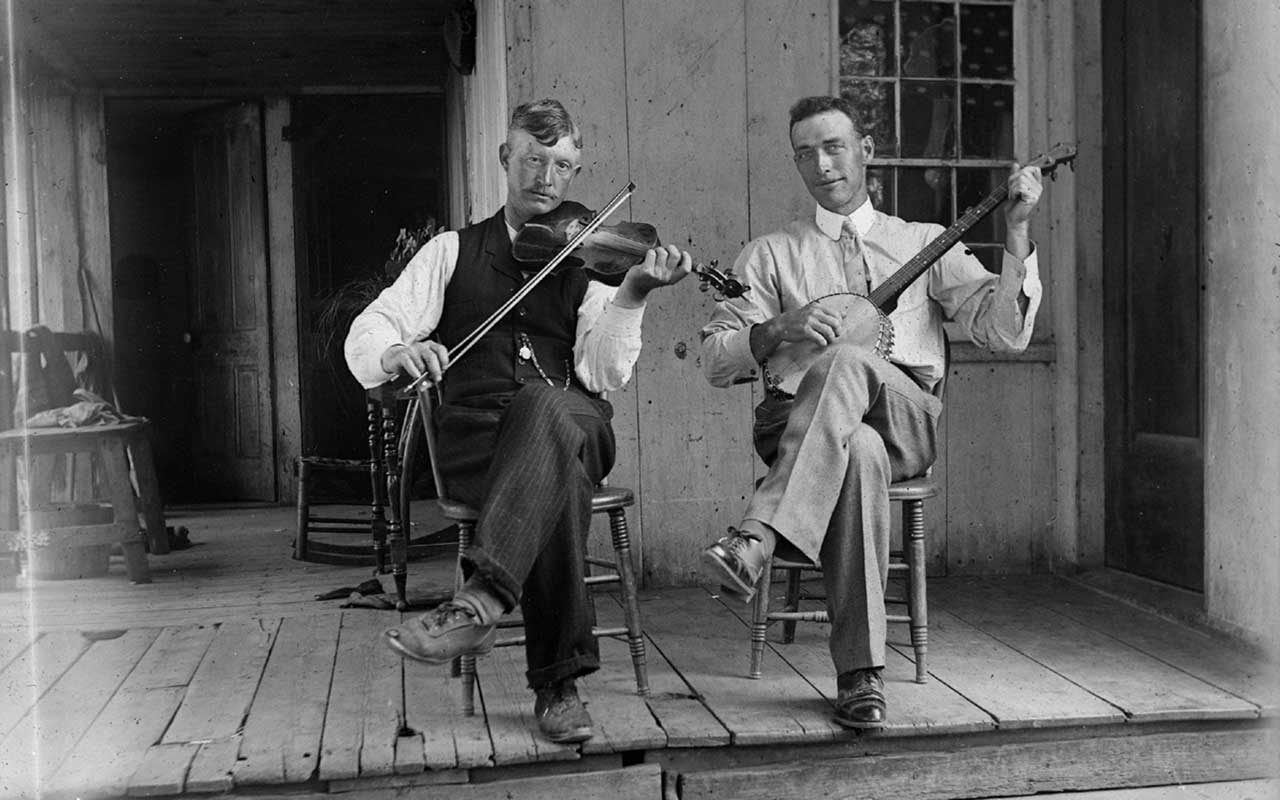Local History

A MOMENT FROZEN IN TIME
All our lives we have been inundated with moving images: television, film, social media. We are so inured to the constancy of the motion, color, and sound, that when an image holds still, it causes a momentary catch – the need to register what we are seeing.
It was a moment like that that captured the attention of Garth Kobal, inveterate volunteer at the David M. Hunt Library in Falls Village, CT, when, at the invitation of Judy Jacobs at the Canaan-Falls Village Historical Society, he came face-to-image with still photographs from the first decades of the 20th century. “My interest was fixed, my attention riveted,” said Garth.
The year was 2015, but time and a pandemic paused the response that Garth had envisioned. After a nine-year delay, a display on the library’s art wall will soon invite contemporary viewers to be part of those moments in time.
Moments in time
The images, some of which are represented here, were of no dramatic historic moment. There were no train wrecks, fires, or natural disasters. They are images of people who lived in the area over a century ago – not celebrities or scoundrels – just people.
A child feeding chickens. Two men playing fiddle and banjo on a well-worn front porch. A distinguished gentleman in a bowler hat proudly displaying his bicycle. A woman in a gingham dress holding the reins of a horse.
The images and the silver nitrate film and glass slides that were in that intriguing box had been donated to the Historical Society by the estate of Mabel Hallaway from Falls Village, CT. She lived her entire 98 years in the family home – the Dean farm on Undermountain Road. Mabel had been an avid collector as well as having become enthralled with photography. Which of the many images in her collection had she made? Which of them had been collected from other photographers? Those issues remained unsolved as the notion of a presentation evolved.
Photography had emerged in the first part of the century as an infectious hobby. Some of the art form’s most prestigious practitioners rose to international fame during the time. Alfred Steiglitz, Edward Steichen, Paul Strand, and a towering figure who brought his talent to Canaan.
The Clarence White School of Photography
Clarence H. White was a photographer who shared the notoriety of his colleagues and used a combination of talent and generosity to not only take and display award-winning photographs, but open a school for photography that for some years conducted classes in East Canaan.
White was a sought-after professor and artist in residence in New York during the academic year but favored first Maine, then Connecticut for the setting of his Clarence H. White School of Photography. While in summer sessions in East Canaan, White and his family lived in a home they purchased – the Burall-Belden House that sits directly across from the South Canaan Meeting House, the same church that for many years resounded with the organ playing of Mabel Hallaway.
Would it be plausible that since White and Mabel Hallaway lived in walking distance of each other during his years in the area that their paths would cross? Was Mabel a student of White’s? Did they meet at one of the frequent picnics that White hosted for students and neighbors?
It is worth noting that White had a well-earned reputation as an instructor who encouraged female students to become engrossed in an art form that had been, in its earliest stages, the realm of male photographers. It was Steichen, himself, who said of Clarence White, “his poetic vision and sensitive intuition produced images that insinuate themselves deeply into one’s consciousness.”
Sadly, along with the fact that the photographs in the library’s “From the Great Falls to the Hilltops” are without attribution, no record of such a meeting exists. It is pure conjecture to think of the two of them meeting or working together.
From the Great Falls to the Hilltops
What should not be left to conjecture is the value, artistry, and humanity of the David M. Hunt Library’s exhibit, which runs from March 16 to May 3 at the library on Main Street in Falls Village. The opening reception, at 3pm in the library, will feature a presentation on glass slide photography by Daniel Karp of Bard College at Simon’s Rock.
Along with silver nitrate film, the use of glass slides was at the very heart of photography in the late 19th and early 20th centuries. Many of the best images in the upcoming show have been printed from glass slides – the same entities used for magic lantern shows. Silver nitrate film, which was very sensitive to light, was delicate and degenerated over time. Many early motion pictures, shot on silver nitrate film stock, have been lost to both natural degeneration and the more dramatic fact that silver nitrate can easily catch fire. Having prints originally shot on silver nitrate preserves the images while the underlying negatives may have been lost.
A second presentation tied to the exhibition will be a discussion of “Early 20th Century Fashion” presented on Saturday, March 23 at 3:30pm by Michele Majer, internationally celebrated author, curator, professor, and authority on clothing and textile history. Her presentation will closely tie in the images presented in the exhibit, many of which include women photographed at Great Falls and near Canaan Mountain.
As curator, Garth Kobal would be quick to point out, the creation of the exhibition could not have been possible without a veritable village of supportive individuals from both the library and the historical society. Fortunately, the catalog created to support From the Great Falls to the Hilltops lists all of the contributors. •
The David M. Hunt Library is located at 63 Main Street, Falls Village, CT. Library hours are Tuesday, 10am to 5pm, Wednesday, 1-5pm, Thursday 10am to 7pm, Friday 1-5pm, and Saturday 10am to 1pm.
